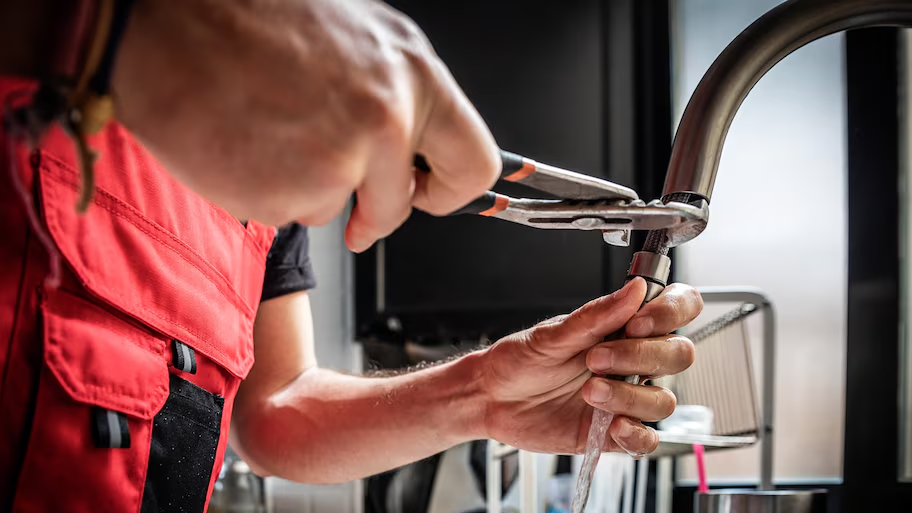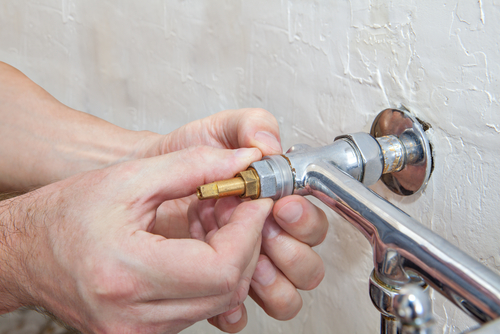Are you looking for insight concerning Leaky Faucets: Why They Happen & What to Do About Them?

Dripping faucets may feel like a small hassle, however their impact exceeds simply the inconvenience of the noise. From wasting water to sustaining unnecessary economic prices and wellness dangers, disregarding a leaking faucet can cause numerous repercussions. In this article, we'll delve into why it's critical to resolve this usual household issue immediately and effectively.
Wastage of Water
Ecological Influence
Dripping taps contribute considerably to water wastefulness. According to the Epa (EPA), a single tap leaking at one drip per secondly can squander greater than 3,000 gallons of water each year. This not just strains water sources yet also influences ecosystems and wildlife depending on them.
Financial Costs
Boosted Water Expenses
Past the ecological impact, leaking taps can pump up water bills substantially. The built up wastage in time converts right into greater utility costs, which might have been prevented with prompt fixings.
Potential Building Damage
In addition, long term trickling can bring about damage to fixtures and surface areas bordering the tap. Water accumulation can create discoloration, rust, and also architectural problems if left ignored, causing additional repair work expenses.
Health and wellness Problems
Mold And Mildew and Mold Growth
The constant visibility of wetness from a leaking faucet creates an excellent setting for mold and mildew and mildew growth. These fungis not just jeopardize indoor air quality but also pose health threats, particularly for people with respiratory conditions or allergic reactions.
Waterborne Illness
Stagnant water in dripping faucets can become a breeding ground for germs and other virus, enhancing the threat of waterborne diseases. Pollutants such as Legionella microorganisms grow in stagnant water, possibly causing serious diseases when consumed or breathed in.
DIY vs. Expert Repair work
Advantages and disadvantages of DIY Repair Work
While some might try to deal with a trickling faucet themselves, do it yourself fixings feature their very own set of difficulties. Without appropriate understanding and devices, DIY efforts can aggravate the concern or cause incomplete repairs, lengthening the trouble.
Benefits of Hiring a Specialist Plumber
Employing an expert plumber ensures that the underlying source of the leaking tap is resolved efficiently. Plumbing professionals possess the proficiency and devices to detect and repair faucet concerns successfully, conserving time and decreasing the danger of additional damages.
Step-by-Step Overview to Repairing a Dripping Faucet
Devices Needed
Prior to attempting to take care of a trickling faucet, collect the necessary devices, including a flexible wrench, screwdrivers, replacement components (such as washing machines or cartridges), and plumber's tape.
Typical Faucet Issues and Their Solutions
Determine the sort of faucet and the particular concern creating the drip. Typical issues include worn-out washing machines, corroded valve seats, or damaged O-rings. Describe supplier instructions or online tutorials for step-by-step guidance on repairs.
Preventive Measures
Routine Maintenance Tips
To avoid trickling taps, carry out routine upkeep such as cleaning aerators, inspecting for leakages, and changing worn-out components quickly. In addition, consider setting up water-saving tools or upgrading to a lot more efficient fixtures.
Relevance of Prompt Repairs
Attending to trickling taps as soon as they're discovered prevents further water wastage and prospective damages, ultimately conserving both water and cash in the long run.
Influence On Residential Or Commercial Property Value
Assumption of Well-Maintained Residential Property
Preserving a home in good condition, consisting of attending to maintenance problems like dripping taps, enhances its viewed worth and value amongst potential customers or lessees.
Impact on Resale Worth
Qualities with well-maintained plumbing components, including taps, command greater resale worths in the realty market. Addressing leaking taps can add to a positive perception throughout home examinations and arrangements.
Ecological Responsibility
Individual Payment to Conservation
Taking responsibility for fixing dripping faucets straightens with more comprehensive initiatives toward water conservation and ecological sustainability. Every person's actions collectively make a significant influence on maintaining valuable resources.
Lasting Living Practices
By prioritizing prompt fixings and taking on water-saving behaviors, individuals add to sustainable living practices that profit both present and future generations.
Verdict
Dealing with a trickling faucet surpasses mere comfort; it's a vital action towards conserving water, minimizing economic costs, and securing health and residential property. Whether via DIY repair work or expert aid, taking action to take care of trickling taps is a small yet impactful way to promote responsible stewardship of resources and contribute to a healthier, much more sustainable future.
How to Fix a Leaky Faucet: Step-by-Step Repair Guide
A leaky faucet may seem like a simple annoyance, but if it's not fixed promptly, that leak could cost hundreds to potentially thousands. From water damage to mold, mildew, and high water bills, even a tiny leak can be catastrophic if left unattended. Damage like this can even affect the overall value of your home, so it's important to take the right approach for leaky faucet repair. You may need the help of a plumber in some cases, but we've got a few tips you can try on how to fix a leaky faucet before calling the pros.
Four Faucet Types
When you're learning how to fix a leaky faucet, the first step is knowing what kind of faucet you're working with! There are four common types.
Cartridge Faucets
Cartridge faucets come in one- or two-handled varieties. In one-handled cartridge faucets, hot and cold water combines in a single cartridge. In the two-handled versions, hot and cold water are controlled separately and mixed in the faucet.
Ball Faucets
Ball faucets have a single lever you push up and down to adjust the pressure and rotate to change the temperature. A slotted metal ball controls the amount of water allowed into the spout.
Compression Washer Faucets
They're the oldest type of faucet, but they're still used in many homes — especially older ones. Compression faucets have two separate handles that, when turned, raise or lower the washer that seals a water valve. This valve stops water from flowing through the faucet when it is turned off.
Disc Faucets
Disc faucets rarely need to be repaired due to their maintenance-free design. The water flow is controlled by two discs — the upper one raises and lowers against a fixed lower disc, creating a watertight seal. If your disc faucet starts leaking, you may need to replace the seals or clean residue buildup from the inlets.
Fixing a Leaky Faucet
Step 1: Turn Off the Water
Whether you're learning how to fix a leaky bathtub faucet or how to fix a leaky kitchen faucet, always turn off the water supply to your working area when you're fixing a leak. The last thing you want is a flood added to your list of things to fix.
Look for the shutoff valves below your sink or around the tub and turn them clockwise to stop the water flow. If your faucet doesn't have shutoff valves, you may need to turn off the water for the whole house. Check to make sure it's off by turning the faucet on. If nothing comes out, you're ready to start the repair.
Step 2: Take Apart the Faucet
How you disassemble your faucet depends on the type of fixture you have. You can use a flathead screwdriver to remove the caps on top of the handle or handles for cartridge and compression faucets. Inside, you should see handle screws. Unscrew these with a screwdriver to remove the handle.
Disc- and ball-style faucets will typically have an inlet screw near the handle, and removing that will reveal the interior of the faucet.
Detach the Valve Stem
For cartridge- and compression-style faucets, you'll see the inner valve stem or cartridge once you remove the faucet handles. If you have a compression faucet, unscrew the brass valve stem. If you have a cartridge faucet, pull out the cartridge. If your cartridge has been in place for a while, it may require some tools or extra force to remove it due to mineral deposits.
Examine and Replace Parts
Once you've removed the parts, check them out to confirm what needs to be replaced. You may see corroded rubber washers, O-rings, stems, or cartridges. On a ball-style faucet, check the seats and springs for damage.
If you need to repair a leaky disc faucet, check the inlet and seals on the lower disc.
Once you determine what parts must be replaced, visit your local hardware store. Bring the damaged parts with you to ensure you can purchase the correct components to replace them.
Clean Valves and Faucet Cavity
If you've removed a stem or cartridge, you may notice mineral buildup in the faucet's threads. Use white vinegar to clean the valve seat by soaking it for a few minutes, then scrub it away with a soft toothbrush and rinse with warm water. You can also clean the interior of the faucet in the same way.
Reassemble the Faucet
Once your faucet is cleaned and the required parts have been replaced, it's time to reassemble it. Put the pieces back together and slowly turn the water supply back on. Doing this slowly is crucial because too much initial water pressure can damage the new hardware you've just installed.
https://homewarranty.firstam.com/blog/how-to-fix-leaky-faucet

I discovered that blog post on Why Are My Faucets Dripping (And Can I Fix It Myself)? when surfing around the search engines. Appreciated our blog? Please quickly share it. Help somebody else locate it. Thanks a lot for being here. Don't hesitate to pay a visit to our site back soon.